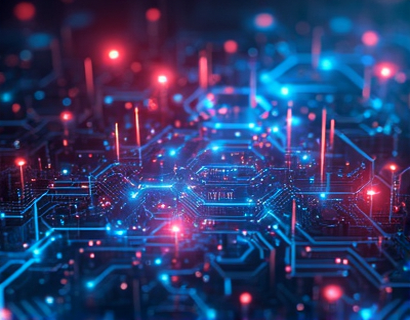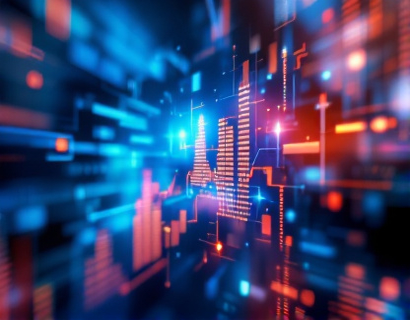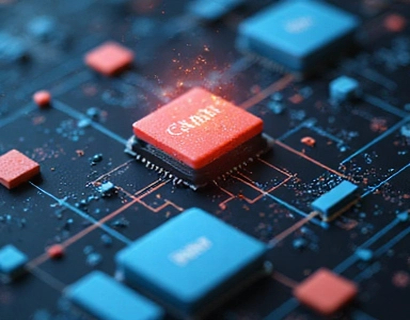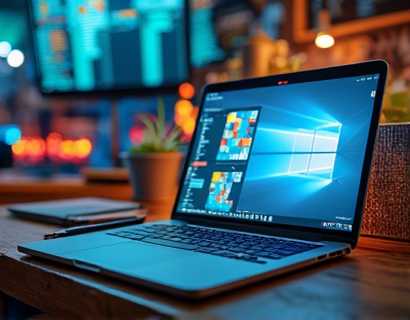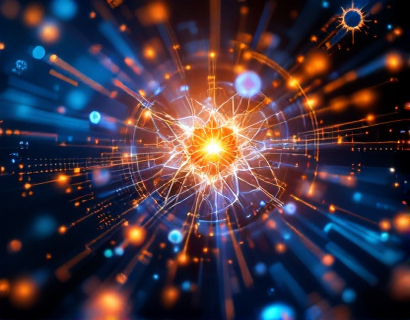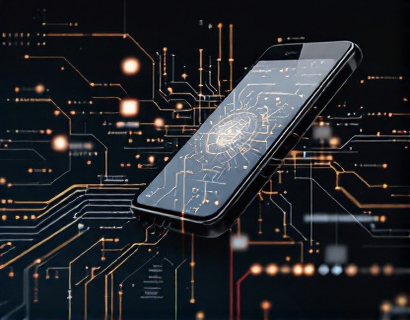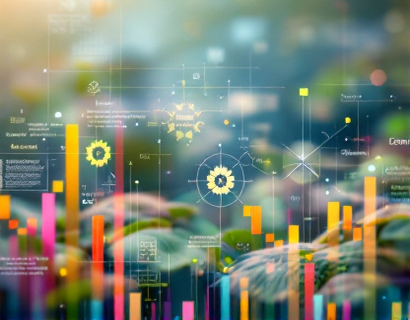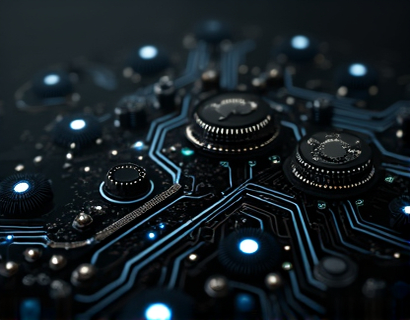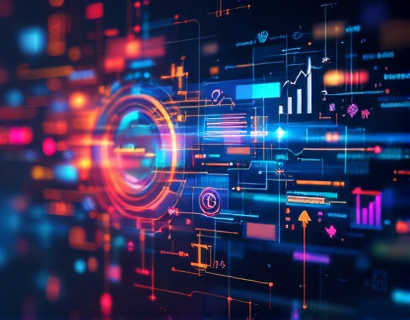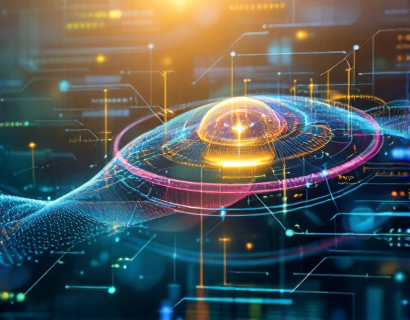Unlocking Enhanced Digital Experiences: The Synergy of Crypto and AI
The intersection of cryptocurrency and artificial intelligence (AI) is giving rise to a new era of digital innovation, one that promises to revolutionize how we interact with technology. This convergence is not just a technological curiosity but a practical solution that enhances user experiences, secures transactions, and opens up new possibilities for developers and users alike. For tech-savvy innovators and early adopters, understanding this synergy is crucial to staying ahead in the rapidly evolving tech landscape.
Understanding the Basics: Crypto and AI
To fully appreciate the impact of combining cryptocurrency and AI, it's essential to grasp the fundamentals of each technology. Cryptocurrency, often referred to as digital or virtual currency, uses cryptography for security and operates on a decentralized network known as a blockchain. This decentralized nature ensures transparency, security, and reduces the need for intermediaries.
Artificial intelligence, on the other hand, involves the simulation of human intelligence processes by machines, particularly computer systems. These processes include learning (the acquisition of information and rules for using it), reasoning (using rules to reach approximate or definite conclusions), and self-correction. AI can operate autonomously or be integrated into existing systems to enhance their functionality.
The Convergence: How Crypto and AI Complement Each Other
The true power of combining cryptocurrency and AI emerges when we consider how each technology can enhance the other. Cryptocurrency provides a secure, transparent, and decentralized platform, while AI brings intelligence, efficiency, and advanced problem-solving capabilities. Together, they create a powerful toolkit for developing next-generation applications and services.
One of the primary ways AI enhances cryptocurrency is through improved security. AI algorithms can detect and prevent fraudulent activities by analyzing patterns and identifying anomalies in real-time. This is crucial for maintaining the integrity of blockchain networks, which are only as strong as their weakest link.
Moreover, AI can optimize blockchain performance. For instance, AI can manage network resources more efficiently, predict and mitigate congestion, and enhance the scalability of blockchain systems. This ensures smoother transactions and a better user experience.
Enhanced User Interactions Through AI-Driven Crypto Solutions
The integration of AI into cryptocurrency solutions leads to more intuitive and user-friendly interfaces. Chatbots powered by natural language processing (NLP) can provide 24/7 customer support, answering queries and guiding users through complex processes with ease. This not only improves user satisfaction but also reduces the workload on human support teams.
Personalization is another area where AI shines. By analyzing user behavior and preferences, AI can tailor recommendations and services to individual needs. In the context of cryptocurrency, this could mean personalized investment advice, customized wallet interfaces, and targeted marketing campaigns that resonate more with users.
Smart Contracts and AI: A Powerful Combination
Smart contracts, self-executing contracts with the terms directly written into code, are a cornerstone of blockchain technology. When combined with AI, smart contracts become even more powerful. AI can analyze complex data sets to dynamically adjust contract terms, ensuring they remain fair and relevant. This adaptability is particularly useful in scenarios like decentralized finance (DeFi) where conditions can change rapidly.
AI can also enhance the automation of smart contracts. By predicting outcomes and automating decisions based on predefined criteria, AI ensures that smart contracts execute seamlessly and efficiently. This reduces the risk of human error and increases the reliability of decentralized applications.
Decentralized Applications (DApps) and AI
Decentralized applications, or DApps, are applications that run on a blockchain or a decentralized network. They offer greater transparency, security, and user control compared to traditional applications. When AI is integrated into DApps, the possibilities expand significantly.
AI can power predictive analytics within DApps, providing users with insights and forecasts based on vast amounts of data. For example, in decentralized marketplaces, AI can predict demand and optimize pricing in real-time. In healthcare DApps, AI can analyze patient data to offer personalized treatment recommendations.
Moreover, AI can enhance the user interface of DApps, making them more intuitive and accessible. Voice-activated commands, gesture recognition, and other advanced input methods can be seamlessly integrated, providing a more natural and seamless user experience.
Security and Privacy: AI-Enhanced Crypto Solutions
Security and privacy are paramount in the world of cryptocurrency. AI plays a crucial role in fortifying these aspects. Machine learning algorithms can continuously monitor blockchain networks for suspicious activities, identifying potential threats before they materialize. This proactive approach to security is far more effective than traditional methods.
Privacy is another area where AI and cryptocurrency intersect. Zero-knowledge proofs, a cryptographic method that allows one party to prove to another that a statement is true without revealing any information beyond the truth of that statement, can be enhanced by AI. AI can optimize the process, making it faster and more efficient while maintaining robust privacy standards.
Challenges and Considerations
While the combination of cryptocurrency and AI offers numerous benefits, it also presents challenges. One of the primary concerns is the computational power required for AI algorithms, especially those involving deep learning. This can lead to higher energy consumption, which is a significant issue for blockchain networks that already face criticism for their environmental impact.
Another challenge is the regulatory landscape. As both cryptocurrency and AI are relatively new and rapidly evolving fields, regulations are still catching up. Ensuring compliance while innovating is a delicate balance that developers and companies must navigate.
Future Prospects: The Road Ahead
The future of cryptocurrency and AI is bright, with numerous potential developments on the horizon. One exciting area is the integration of AI into the blockchain development process itself. AI can assist in code generation, bug detection, and even the design of new blockchain architectures, making the development of decentralized applications more efficient and robust.
Another promising direction is the use of AI in enhancing the interoperability of different blockchain networks. By analyzing and bridging the gaps between various blockchain systems, AI can facilitate smoother interactions and data exchanges, paving the way for a more connected and cohesive decentralized ecosystem.
Furthermore, the rise of edge computing, combined with AI and cryptocurrency, could lead to more decentralized and efficient data processing. By performing AI computations closer to the data source, latency can be reduced, and privacy can be enhanced, making decentralized applications even more viable.
Conclusion
The convergence of cryptocurrency and AI is not just a technological trend but a transformative force that is reshaping the digital landscape. For tech-savvy innovators and early adopters, embracing this synergy offers unparalleled opportunities to create and leverage cutting-edge solutions. As we continue to explore and harness the potential of this combination, we move closer to a future where digital experiences are not only enhanced but fundamentally reimagined.





